Clayton Carroll Automotive Centre celebrates 20 years of innovation
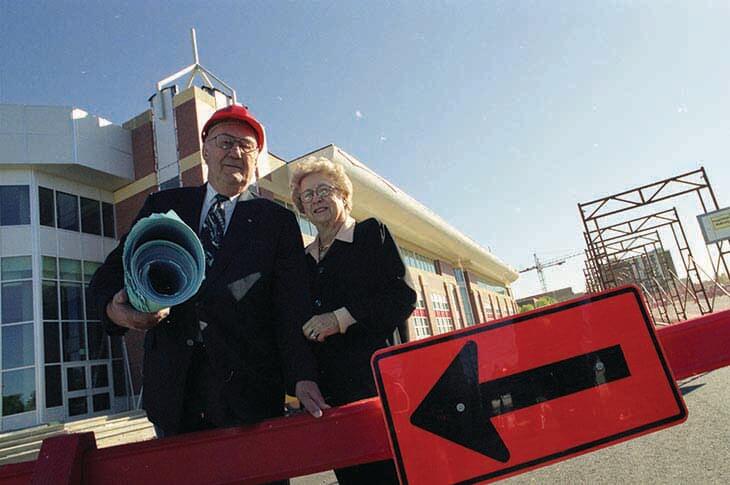
As the Clayton Carroll Automotive Centre celebrates 20 years, LINK writer Zachary Robertson speaks with Clayton Carroll's widow, Norma, to learn more about this humble philanthropist.
Clayton Carroll (1920-2011) defined dedication towards community. Whether it was his leadership as a Rotarian; his support for the Calgary Philharmonic Orchestra, Heritage Park and other causes; or his groundbreaking gift of $1 million to SAIT in 2000, Clayton felt a profound duty to help others.
Generous support for community runs deep in the Carroll family — Clayton’s father donated a portion of their farm in Nevis, Alberta to serve as the location for the local school.
Clayton’s commitment to others went hand in hand with his deep sense of humility — a lifelong aspect of his personality influenced by his upbringing. When he decided to support students at SAIT, he did so out of reflection on his own struggles as a young man lacking the financial means to continue his education.
“After he graduated from high school, Clayton registered at PITA [now SAIT]. He went to work at a farm to earn his tuition,” Norma says.
She remembers how, long after he graduated from the Automotive Service Technician program in 1940, Clayton would say, “I’m sure there are other young people who need financial help with their studies.”
Together, Clayton and Norma established a number of scholarships and student awards. Clayton’s gift in 2000 transformed automotive education at SAIT and, because of that generosity, the Institute named its new automotive training facility after him — an honour Clayton did not ask for, and needed convincing to accept.
“Clayton was never one to expect gratitude for anything he did,” reflects Norma. Their humble generosity towards SAIT students was recognized in 2008, when Clayton and Norma were both presented with honorary degrees.
"Clayton programmed his life to make something for himself, knowing full-well that if the time came, he wanted to give back." — Norma Carroll
Since it opened in 2002, the Clayton Carroll Automotive Centre has provided students, staff and instructors with a one-of-a-kind facility. But, beyond the labs and state-of-the-art classrooms, what truly makes the Automotive Centre exceptional is the sense of community and pride it inspires for the people who walk through its doors — something Clayton would have appreciated.
“When you walk into the Clayton Carroll Centre, you know you’re in an automotive building,” says George Rhodes (WELD ’83), Associate Dean, Apprenticeships and Skilled Trades, School of Transportation. “And that comes with a sense of belonging shared by the students and the staff, and I think it’s allowed us to also connect better with industry.”
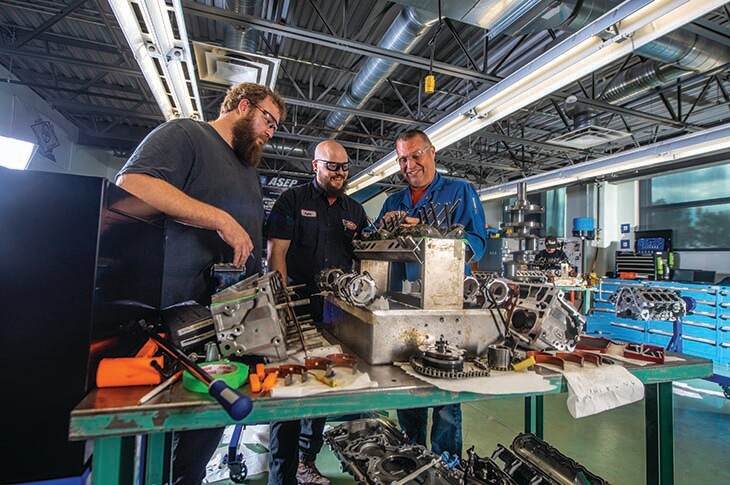
Before construction of the Centre, the majority of transportation classes were held in the “B” wing of the Thomas Riley Building. Matt Carpenter remembers those old labs and service bays from his time working towards his Automotive Services Technician journeyman certificate in 1998.
“Back then, the building was very industrial — dark brick, old dim lighting, no computers, solid wooden doors with small fogged-up windows,” he recalls. “The shops had pits in them for performing alignments using a light or string aligner.”
When he returned to SAIT in 2006 for his Automotive Service Technology diploma, Carpenter studied in the new Clayton Carroll Automotive Centre.
“The old building felt like an institute; the Clayton Carroll Centre feels like a place you want to be,” he says. “As a student, I really enjoyed the space and the lighting, lots of windows, open spaces and room to do class projects and team work. Many of the classrooms were equipped to have internet connections and plug-ins at every desk, which was very advanced!”
History continued
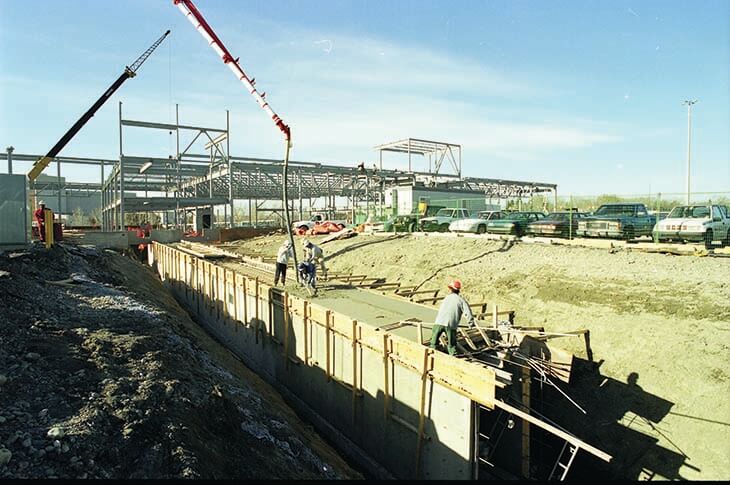 |
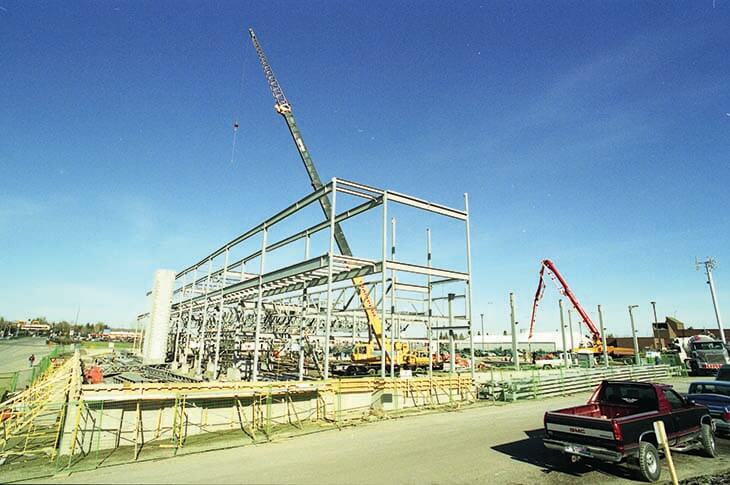 |
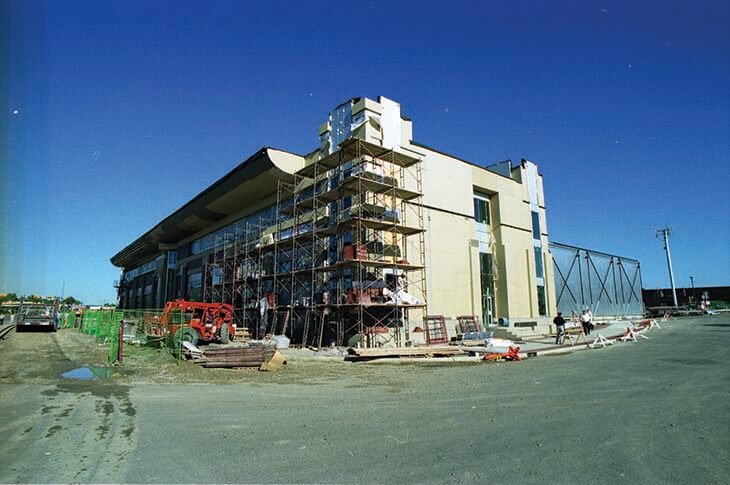 |
SAIT Archives - George Webber photos
The School of Transportation is SAIT’s oldest academic school — when the Provincial Institute of Technology and Art (as SAIT was known until 1960) opened in 1916, it offered a Motor Mechanics program. The Clayton Carroll Automotive Centre provides a bridge between the legacy of those first classes and SAIT’s ability to meet the future needs of the automotive industry.
“There’s constant change in technology in the transportation industry,” says James Oancia, Academic Chair, Transportation. “And as technology changes we have the facility to support those changes because we have the space and diversity, the labs, shops and classrooms.”
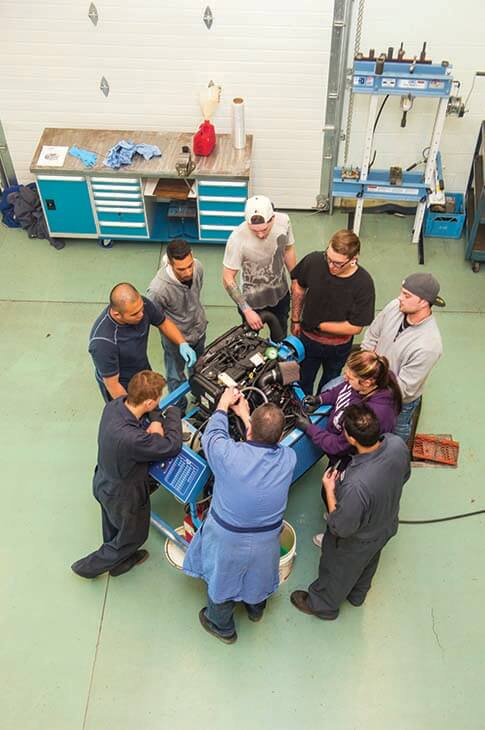 One dramatic difference reflects the variety of vehicle types available today. “We are now having training discussions about hybrid vehicles, electric vehicles, vehicles being developed for autonomous driving,” shares Oancia. “These things didn’t exist 20 years ago.”
One dramatic difference reflects the variety of vehicle types available today. “We are now having training discussions about hybrid vehicles, electric vehicles, vehicles being developed for autonomous driving,” shares Oancia. “These things didn’t exist 20 years ago.”
And, he says, with many vehicles incorporating between 60 and 70 computer modules in their mechanical systems — a four-fold increase over two decades — there have been changes at all levels of automotive training.
“Every mechanical system we’re currently teaching has more systems-control technology than ever before,” explains Oancia. “The Centre’s design allows us to upgrade scan tools and diagnostic training resources on a regular basis to help students learn the curriculum.”
Today, Matt Carpenter is on the other side of the classroom. As an automotives instructor, he reinforces the school’s focus on the future, speaking with excitement about the opportunities for learning at the Centre. “The labs accommodate modern class sizes and several labs specialize in certain tasks, which makes the training focused and intentional in each area,” he says.
Some labs address specific areas or operations of a vehicle, such as a tune-up lab where students learn engine performance and electrical systems diagnostics. Others are designed for hands-on experience in drill tapping and measuring skills. And product-specific labs for Ford and General Motors provide new vehicles and training aids for classes taught by Carpenter and other Ford- or GM-trained instructors.
The Clayton Carroll Automotive Centre allows students to train and develop the technical skills they need for the latest automotive technology trends, and it offers a space to share their excitement, thoughts and ideas.
“It’s not just a building, it’s a community and a family,” says Carpenter. “We all share the enjoyment of being in the same space.”
"My sole intention was to give back to SAIT in a meaningful way, so that future transportation students can benefit from a SAIT quality technical education as I did." — Clayton Carroll
When asked what Clayton would think of the sense of community his building continues to inspire, Norma says: “Knowing Clayton, he would want to be there, shaking hands and saying, ‘Thank you for coming to say hello.’”
It’s a reminder of how, at the start of every semester, Clayton would meet with students — a unique way for them to connect with the man whose name is on the building.
“And if today’s students were saying ‘Thank you, Mr. Carroll,’ he wouldn’t be boastful at all,” says Norma. “He would be all heart.”
This story was originally written for the print version in the Fall 2022 issue of LINK magazine.

Oki, Âba wathtech, Danit'ada, Tawnshi, Hello.
SAIT is located on the traditional territories of the Niitsitapi (Blackfoot) and the people of Treaty 7 which includes the Siksika, the Piikani, the Kainai, the Tsuut’ina and the Îyârhe Nakoda of Bearspaw, Chiniki and Goodstoney.
We are situated in an area the Blackfoot tribes traditionally called Moh’kinsstis, where the Bow River meets the Elbow River. We now call it the city of Calgary, which is also home to the Métis Nation of Alberta.